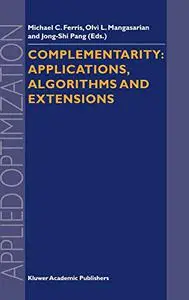Complementarity: Applications, Algorithms and Extensions by Michael C. Ferris, Olvi L. Mangasarian, Jong-Shi Pang
English | PDF | 2001 | 400 Pages | ISBN : 0792368169 | 35.2 MB
This volume presents state-of-the-art complementarity applications, algorithms, extensions and theory in the form of eighteen papers. These at the International Conference on Com invited papers were presented plementarity 99 (ICCP99) held in Madison, Wisconsin during June 9-12, 1999 with support from the National Science Foundation under Grant DMS-9970102. Complementarity is becoming more widely used in a variety of appli cation areas. In this volume, there are papers studying the impact of complementarity in such diverse fields as deregulation of electricity mar kets, engineering mechanics, optimal control and asset pricing. Further more, application of complementarity and optimization ideas to related problems in the burgeoning fields of machine learning and data mining are also covered in a series of three articles.
In order to effectively process the complementarity problems that arise in such applications, various algorithmic, theoretical and computational extensions are covered in this volume. Nonsmooth analysis has an im portant role to play in this area as can be seen from articles using these tools to develop Newton and path following methods for constrained nonlinear systems and complementarity problems. Convergence issues are covered in the context of active set methods, global algorithms for pseudomonotone variational inequalities, successive convex relaxation and proximal point algorithms. Theoretical contributions to the connectedness of solution sets and constraint qualifications in the growing area of mathematical programs with equilibrium constraints are also presented. A relaxation approach is given for solving such problems. Finally, computational issues related to preprocessing mixed complementarity problems are addressed.
Without You And Your Support We Can’t Continue
Thanks For Buying Premium From My Links For Support
Thanks For Buying Premium From My Links For Support



